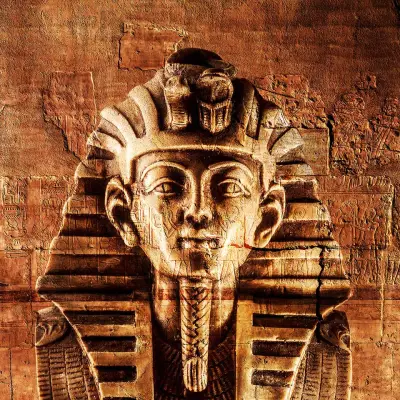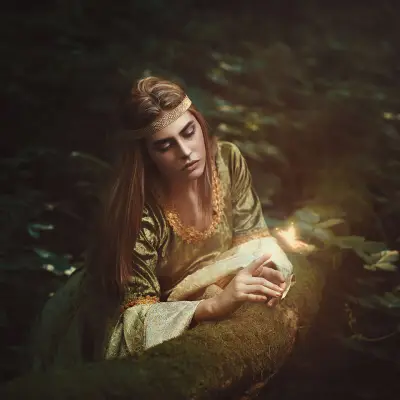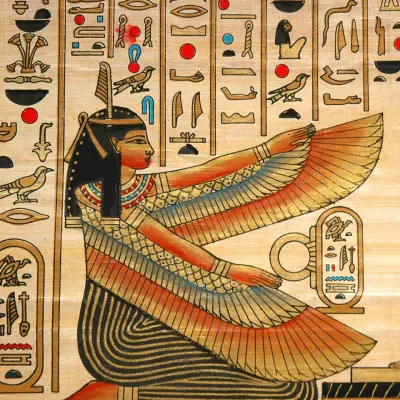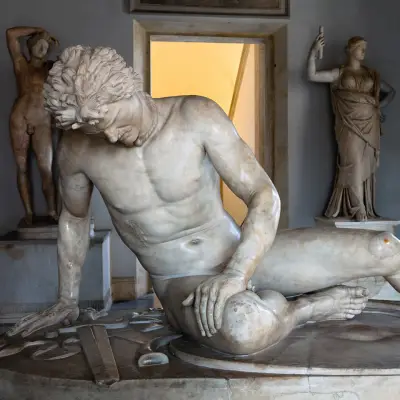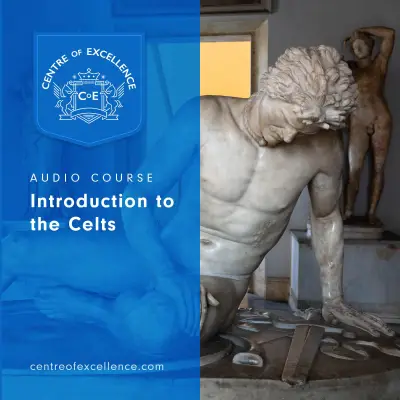If you’ve ever come across an image of a horned figure seated among wild animals, holding a serpent or a torc, you may have stumbled upon Cernunnos, the elusive Celtic god often referred to as the Horned God.
Mysterious and deeply symbolic, Cernunnos invites curiosity from those interested in mythology, spirituality, and the sacred rhythms of nature. In this blog post, you’ll discover his stories, powers, and lasting significance.
Jump to:
Recommended for you!
Best SellersWho is Cernunnos in Celtic Mythology?
Cernunnos (pronounced Ker-noo-nos) is one of the most enigmatic figures among the Celtic gods. Sometimes referred to as the Celtic forest god or the stag god, he’s usually depicted with large antlers, often seated cross-legged, surrounded by animals such as deer, snakes, and sometimes bulls or wolves.
Though not as widely recorded in written sources as Greek or Roman gods, images of Cernunnos appear across Celtic Europe, most notably on the Gundestrup Cauldron, a richly decorated silver vessel from around the 1st century BCE. This visual consistency suggests that he played a powerful role across Celtic tribes.
Cernunnos is most commonly known as the Celtic god of nature, wilderness, animals, fertility, and even wealth. His very appearance, blending human features with animal traits, represents the union of man and nature.
Myths and Stories of Cernunnos
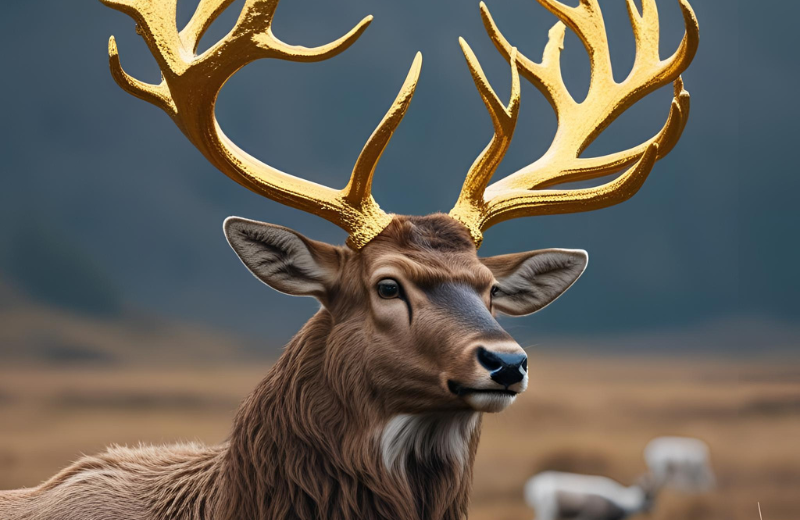
Cernunnos doesn’t feature in long, detailed myths like other ancient gods, but several artefacts and regional stories offer glimpses into how he was seen. The following three stories reflect symbolic moments and interpretations of Cernunnos’ presence in Celtic lore.
The Horned One and the Sacred Serpent
On the Gundestrup Cauldron, Cernunnos is depicted seated cross-legged, calmly holding a serpent in one hand and a torc in the other. This powerful image is often interpreted as a story of harmony between life and transformation—the serpent symbolising renewal and rebirth, and the torc representing divine authority and spiritual connection.
The Forest Keeper and the Stag
In one folk retelling from Gaulish tradition, hunters entered a sacred forest and encountered a great stag with golden antlers. When they tried to strike it down, the creature transformed into a horned man—Cernunnos himself—who warned them never to hunt for sport and banished them from the woods. This tale frames Cernunnos as a protector of wildlife and a guardian of balance between humans and nature.
The Disappearance at Samhain
Some Celtic stories speak of travellers who vanished near ancient groves during Samhain, only to return changed, or not at all. These tales say Cernunnos would walk the boundary between the worlds that night, guiding souls or testing the hearts of those who wandered too far into the wild. Though not malevolent, he demanded respect for the spiritual forces hidden in nature’s darkness.
Cernunnos’ Powers
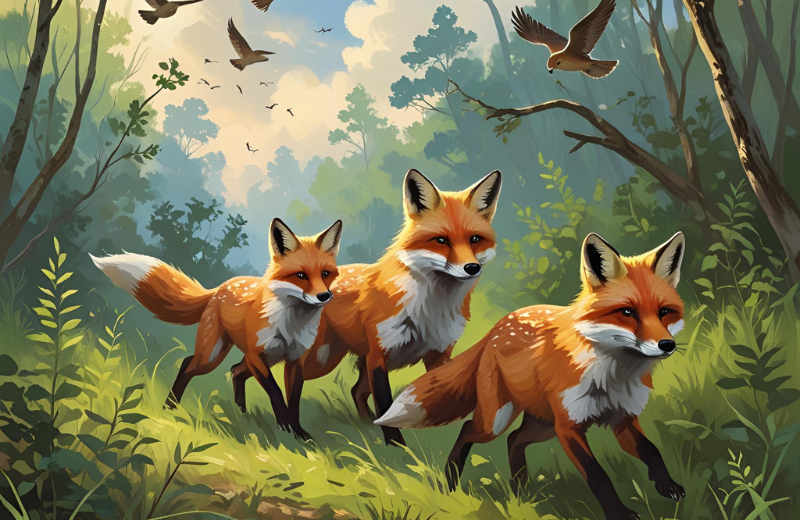
Cernunnos’ powers lie in his deep connection to the natural world. As the Celtic nature god, he’s believed to govern life and death in the forest, ensure the health of wild animals, and maintain balance within ecosystems. His powers include:
- Fertility and abundance: As a horned god, Cernunnos is linked to fertility, both in nature and among humans. His image often conveys virility and growth.
- Wildlife and forests: Cernunnos protects forest animals and is sometimes seen as the spiritual guardian of wooded places.
- Wealth and prosperity: He is also associated with material wealth and trade, evidenced by coins found around his depictions.
- Life and death: As a symbol of the cycle of nature, Cernunnos holds sway over both creation and decay, mirroring the seasons.
- Spiritual guidance: Some traditions view him as a psychopomp, a guide who helps souls travel between worlds.
Cernunnos’ Symbols

The symbols associated with Cernunnos speak volumes about his identity and role in Celtic belief systems:
- Antlers: His most recognisable feature, the antlers mark him as the horned man, a bridge between the human and animal realms.
- The serpent: This often represents transformation, rebirth, and healing.
- The torc: A symbol of power, status, and connection to the divine.
- Animals: Especially the stag, bull, and wolf, each representing wildness, strength, and instincts.
- The seated pose: Cernunnos is often shown in a meditative position, reflecting spiritual balance.
Cernunnos' Relationships and Family Tree
Cernunnos is often described as a primal deity rather than the offspring of named parents. While some myths loosely associate him with the Earth itself, he isn’t part of a defined lineage like many other gods. Instead, he represents an elemental force of nature: ancient, wild, and ever-present.
He doesn’t have traditional siblings, but spiritually, he’s closely connected with the animal world and is sometimes paired with a female forest or fertility goddess, seen as his divine counterpart. This symbolic pairing reflects the balance between masculine and feminine in nature. Unlike deities who rule or command, Cernunnos acts as a guardian of the wilderness, guiding the cycle of life and death from within the forest itself.
Cernunnos' Influence and Legacy

Though not worshipped in grand temples, Cernunnos had a quiet yet powerful influence across Celtic lands. His image appeared in carvings and sacred art, portraying him as calm and connected to animals. Unlike fierce or vengeful gods, he embodied peace, natural cycles, and the deep stillness of the woods.
This image shaped how people saw nature as something sacred, not separate from the divine. Later folklore figures like Herne the Hunter echo his traits, and in modern times, he helped inspire the idea of the horned god in pagan traditions.
Cernunnos in Modern Times
He also features in popular culture and alternative spirituality, offering a gentler view of masculine divinity, one rooted in harmony and instinct. Though no longer worshipped in ancient rites, Cernunnos continues to represent the sacred power of the natural world and our place within it.
Recommended for you!
Best SellersFrequently Asked Questions About Cernunnos in Mythology
What is the pronunciation of Cernunnos god?
Cernunnos is typically pronounced Ker-noo-nos, though some say Ser-noo-nos. The original Celtic pronunciation is uncertain.
Is Cernunnos a beast?
While he has animal features, Cernunnos is not a beast. He’s a divine being who represents the fusion of humanity and the wild.
Is Cernunnos the god of wealth?
Cernunnos is sometimes associated with wealth, especially in terms of abundance from nature and commerce.
Are Cernunnos and the Green Man the same?
Cernunnos and the Green Man are not exactly the same, but they’re closely related symbols of nature. The Green Man represents nature’s regeneration, while Cernunnos is more focused on wilderness, animals, and life cycles.
What tree is Cernunnos associated with?
The oak is commonly linked to Cernunnos, symbolising strength, endurance, and a sacred connection to the forest.
What is Cernunnos in Gaelic?
There’s no exact Gaelic equivalent, but Cernunnos is sometimes connected with Irish figures like Flidais or the Dagda. The Irish equivalent of Cernunnos might be seen as a blend of multiple deities tied to fertility and nature.
What is another name for Cernunnos?
Cernunnos doesn’t have many alternative names, but titles like the horned god, stag god, or forest god are often used to describe him.
Study Our Celtic Mythology Diploma for £29
If learning about figures like Cernunnos has sparked your curiosity, why not learn more about ancient Celtic legends? With Centre of Excellence’s Celtic Mythology Diploma Course, you can explore the fascinating myths, gods, and symbols that shaped ancient Celtic culture.
Whether you're passionate about history, spirituality, or storytelling, this course is engaging for everyone—no prior experience needed. Plus, by following the link below, you can enrol today for the discounted price of just £29.

